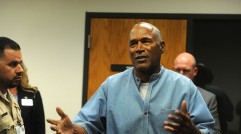Diversity in Tech: LinkedIn's Workforce Report Continues White Male Trend Ahead of Women, Other Ethnicities
Men dominate the tech industry. That isn't new. LinkedIn's workforce diversity report further proved the existing gender and ethnicity imbalance.
More than 5,400 employees work for the world's largest professional network in various offices from Mountain View, California, Sao Paulo and Bangalore, India. With employment in the thousands, diversity is a problem for LinkedIn.
"Over the past few years, we've experienced tremendous growth and have become a truly global company, but in terms of overall diversity, we have some work to do," LinkedIn Vice President for Global Talent Organization Pat Wadors said.
Men surpass women in term of employee percentage, 61 to 39.
Ethnicity statistics were based on its U.S. employees only. Of the American employees, 53 percent are white. While 15 percentage points behind, Asians are the only other ethnicity to achieve double-digit figures, at 38 percent. Hispanics placed third, with 4 percent, narrowly ahead of 2 percent for blacks. U.S. employees of two or more races accounted for 2 percent, while less than 1 percent were labeled as "other."
Follow the Latest Tech News on Twitter: @LatinPostTech
Regarding why the disclosure included only the ethnicities of U.S. employees and not those of global employees, Wadors said, "That's because legal complexities prohibit us from asking about the ethnicity of employees in many countries outside of the U.S., so accurately reporting that data is not currently possible."
Wadors did note, however, that LinkedIn has initiated programs to improve the gender and ethnicity gaps. One initiative is with the organization Year Up, which aims to close the "opportunity divide," particularly among urban young adults.
With Management Leadership for Tomorrow (MLT), LinkedIn helps prepare African-Americans, Hispanics and Native Americans with skills and "door-opening relationships" required to "unlock their potential."
The third initiative is DevelopHer, created by LinkedIn. The event is an annual women's hackday to engage and support women in the tech industry.
"True inclusion is something that can only be achieved through a workforce that reflects the rich diversity of our member base, and this is something we strive to do in all of our hiring efforts," Wadors said. "My role as vice president of Global Talent affords me the unique opportunity to make a positive change in closing the diversity and skills gaps in today's workforce."
LinkedIn said it decided to reveal its workforce diversity statistics following Google's choice to release its diversity numbers. Wadors said releasing LinkedIn's own diversity numbers ensures accountability on top of transparency.
"We may not be the first company to be transparent, and we hope we won't be the last," Wadors added. "Our goal is to improve over time and to make a lasting change at LinkedIn. Let's challenge each other to make it a more inclusive world in which we work."
As Latin Post reported, Yahoo! also released its workforce diversity figures, showing most of its employees are white men.
__
For the latest updates, follow Latin Post's Michael Oleaga on Twitter: @EditorMikeO or contact via email: m.oleaga@latinpost.com.
Subscribe to Latin Post!
Sign up for our free newsletter for the Latest coverage!













